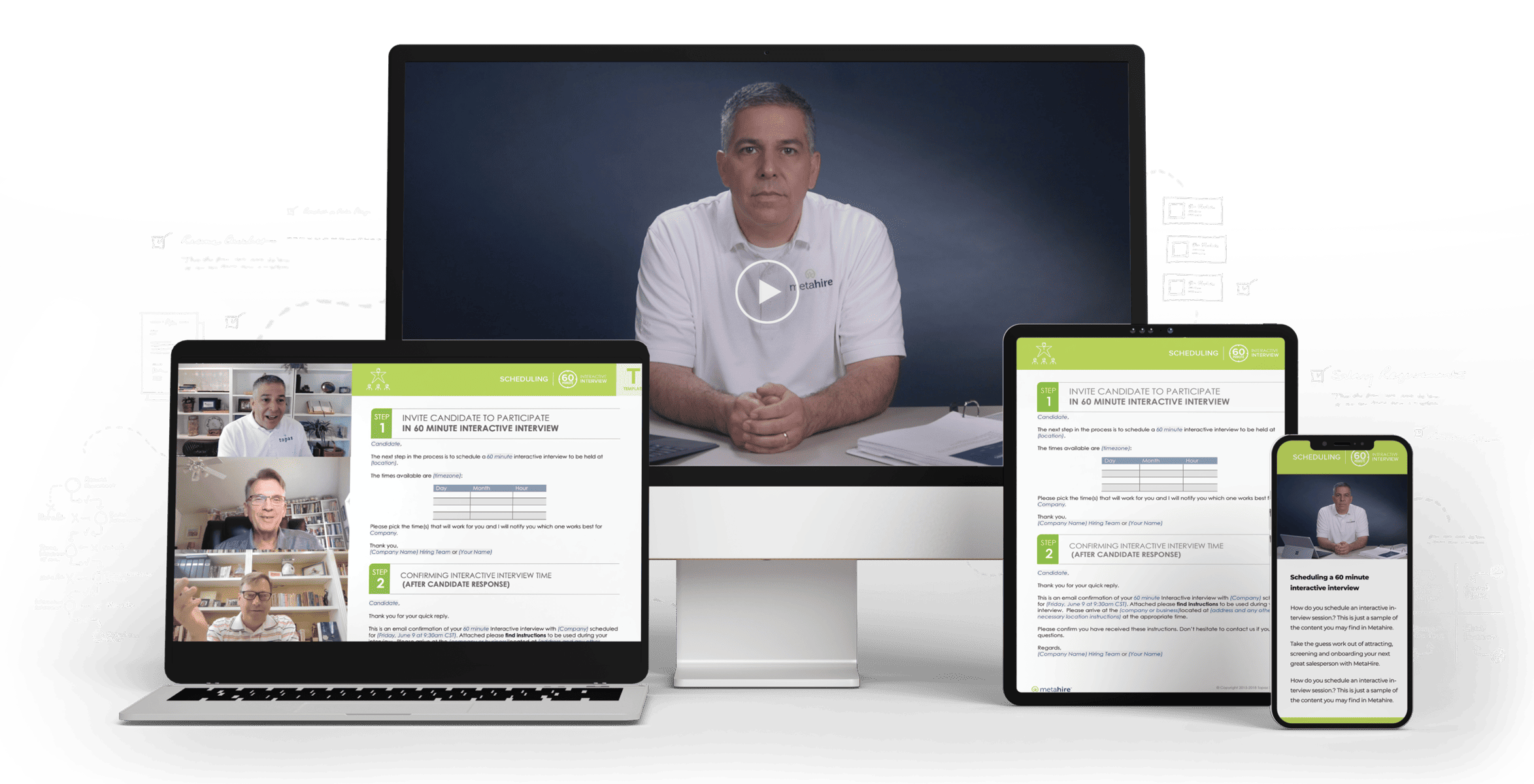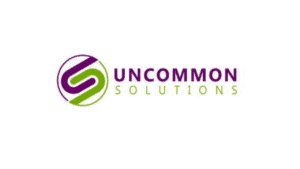Mental protein? You must be thinking we’re crazy.
With high-protein diets being all the rage these days, many people are focused on physical fitness and personal care — more protein = fullness, muscle growth, etc. But sometimes, we need some “mental protein” to feed our brains and remind us how to thrive, not survive, in our day-to-day lives (p.s., we’re not talking about food anymore).
Think of mental protein exercises as the nutritional boost your brain needs to perform at its peak — an essential dose of knowledge that keeps your strategic muscles strong. This concept is a game-changer for salespeople, sales leaders, and sales managers. Just as you wouldn’t skip a meal if you’re serious about fitness, you shouldn’t miss servings of mental protein, either. Whether it’s a brief, impactful update on handling objections, a quick tip for refining your elevator pitch, or a mini case study illustrating a successful sales strategy, each piece of actionable insight serves as the fuel that transforms average sales conversations into decisive buyer engagements.
Quality outshines quantity in sales team meetings. Would you agree?
By integrating mental protein exercises as a curated menu of top industry practices, innovative techniques, and real-world examples, you’re not just adding filler — you’re delivering vital insights that strengthen your team’s skills. Over time, this steady stream of learning fosters continuous improvement, keeping your team agile, well-informed, and consistently ready to help customers buy.
And they’re fun!
We’ve broken down 40 mental protein tips into subsections so you can feed your brain (and team) with whatever it needs when needed.
Table of Contents
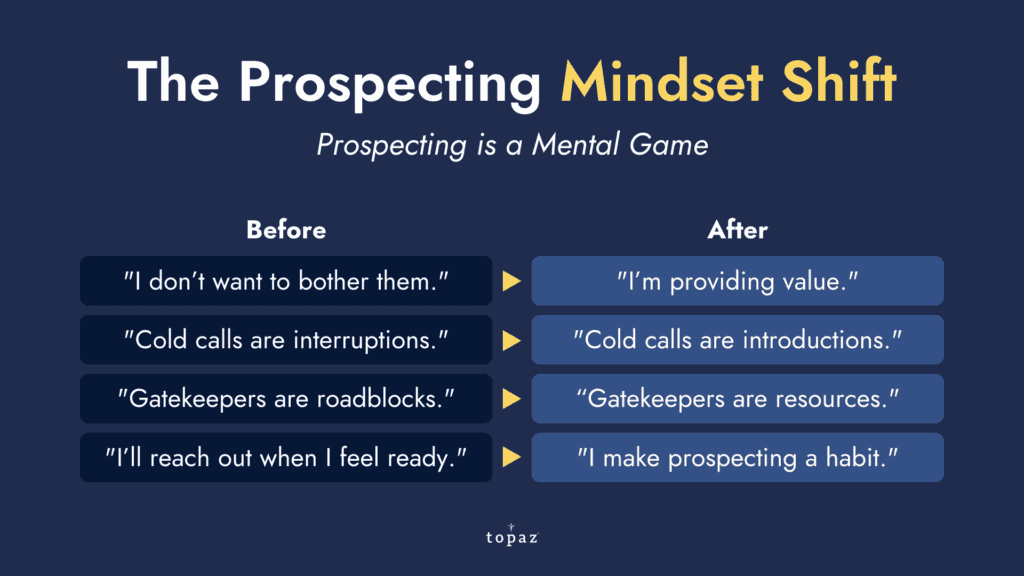
Prospecting and Preparation
Mastering the Elevator Pitch
Insight: Refine your team’s ability to articulate value quickly.
Application: Try this Stand Out Introduction AI Tool, which allows each salesperson to polish their approach for clarity and impact.
Buyer Persona Deep Dive
Insight: Encourage your team to study one key aspect of your ideal customer.
Application: Have salespeople review a segment of your buyer persona, discussing its implications for their sales process.
Crafting a Unique Value Proposition
Insight: Reinforce the importance of clearly articulating what sets your solution apart.
Application: Share a tip on refining the value proposition to resonate with specific buyer challenges.
Effective Pre-Call Planning
Insight: Success begins before the call even starts.
Application: Ask your team to outline one new piece of pre-call research that might improve their next engagement (e.g., what your ground rules are, 3 to 5 questions the prospect may ask, and what we would like to accomplish in the meeting).
Adaptive Sales Messaging
Insight: Brainstorm with your team to retool and/or reinforce the message of your product or service.
Application: Share a tip on customizing messaging based on real-time feedback from a recent client interaction.
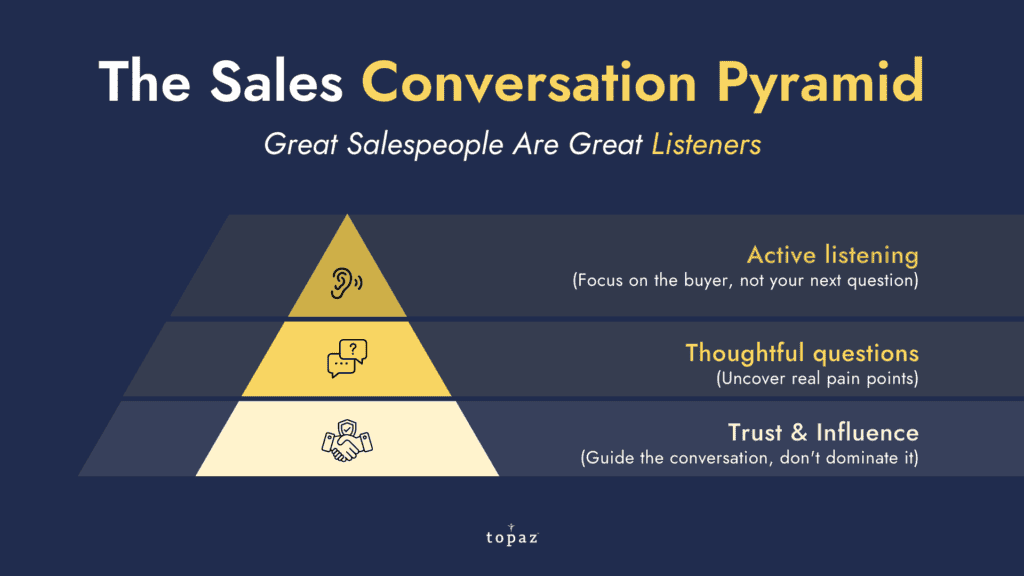
Communication and Rapport Building
The Power of Open-Ended Questions
Insight: A reminder to shift from closed yes/no queries to open-ended questions can dramatically improve how your team engages with prospects.
Application: Kick off your team meeting with a “Question of the Day” challenge where salespeople are encouraged to craft and test one open-ended question to use with their prospects.
Active Listening Techniques
Insight: Listening is as crucial as speaking in sales conversations.
Application: Introduce an exercise focusing on listening skills — perhaps a role-play where one person speaks and the other summarizes key points.
Storytelling for Connection
Insight: Narratives resonate. A well-told story can turn features into benefits.
Application: Encourage sharing short success stories highlighting how your solution helped a client overcome a challenge.
Personalization in Communication
Insight: Tailored messages build stronger relationships.
Application: Offer a quick tip on customizing communication based on a prospect’s industry or needs, and challenge your team to apply it in their next call.
Building Rapport Quickly
Insight: First impressions matter. Rapport sets the stage for trust.
Application: Share one strategy, such as mirroring body language or asking a thoughtful question, to help your team connect faster with prospects.
Empathy in Action
Insight: A genuine understanding of a prospect’s challenges creates a strong connection.
Application: Provide a tip or mini-case study that illustrates empathetic listening and prompt team members to use it in their calls.
Harnessing Curiosity with Transformative Statements
Insight: Transformative statements unlock deeper buyer insights.
Application: Challenge your team to incorporate one thoughtfully crafted transformative statement in their conversations. (i.e., “What if you could shift from reacting to market changes to proactively driving them, turning your team into innovators rather than followers?”)
Building Rapport Through Authenticity
Insight: Authentic interactions create lasting connections.
Application: Encourage your team to share a personal anecdote or genuine interest point that builds rapport in every call.
Mastering the Art of Silence
Insight: A well-placed pause can invite valuable input from prospects.
Application: Challenge your team to consciously incorporate moments of silence in their sales calls and observe the effect.
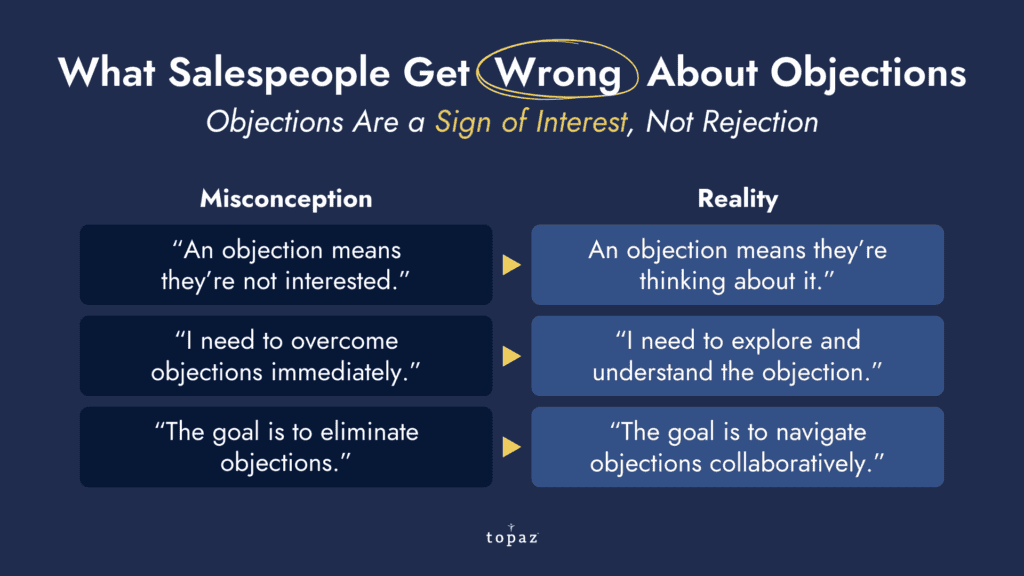
Objection Handling, Pain Discovery and Closing
The Art of Reframing Objections
Insight: Encourage your team to view every customer objection as an opportunity rather than a setback. A quick mental protein dose could be a short scenario or role-play exercise demonstrating how to transform a “no” into a pathway for understanding the buyer’s true needs.
Application: Introduce a “Reframe of the Day” where a typical objection is dissected and alternative responses are explored. This will strengthen your team’s confidence and refine their real-time objection-handling approach.
Handling Price Objections with Value
Insight: Every pricing objection is an opportunity to dig deeper
Application: Offer a tip on addressing price concerns (i.e., what is your budget, how did you come up with that number, have you thought through an ROI, has this project been approved, and is funding available).
Topaz Tip: Remember that you are worth 10x what you charge for the right clients.
The Deep Dive Question Drill
Insight: Encourage curiosity to reveal hidden pain points, ensuring every response leads to a deeper understanding of the prospect’s frustrations.
Application: Role-play a scenario where one team member acts as the prospect and another as the salesperson. Focus on asking open-ended questions that probe for underlying challenges.
The Silence Strategy to Uncover Pain
Insight: Allowing silence encourages prospects to expand on their issues, often revealing deeper, unspoken concerns that might otherwise be missed.
Application: In a role-play or live call, train your team to use deliberate pauses after asking about a prospect’s current challenges.
Active Listening Drill
Insight: Enhance empathy and ensure every interaction builds on genuine understanding.
Application: Have each participant share a recent challenge they faced. Others then paraphrase and ask follow-up questions to dig deeper.
Personalized Value Mapping
Insight: Help your team see the prospect as a partner, tailoring conversations to each unique need.
Application: Have each salesperson create a value map for a current prospect, detailing how tailored advice rather than generic solutions can address specific challenges.
Closing with Confidence and Clarity
Insight: A confident close is the culmination of all your preparatory work.
Application: Share a closing technique — like summarizing benefits before asking for the commitment — to boost confidence and create a clear path to conversion.
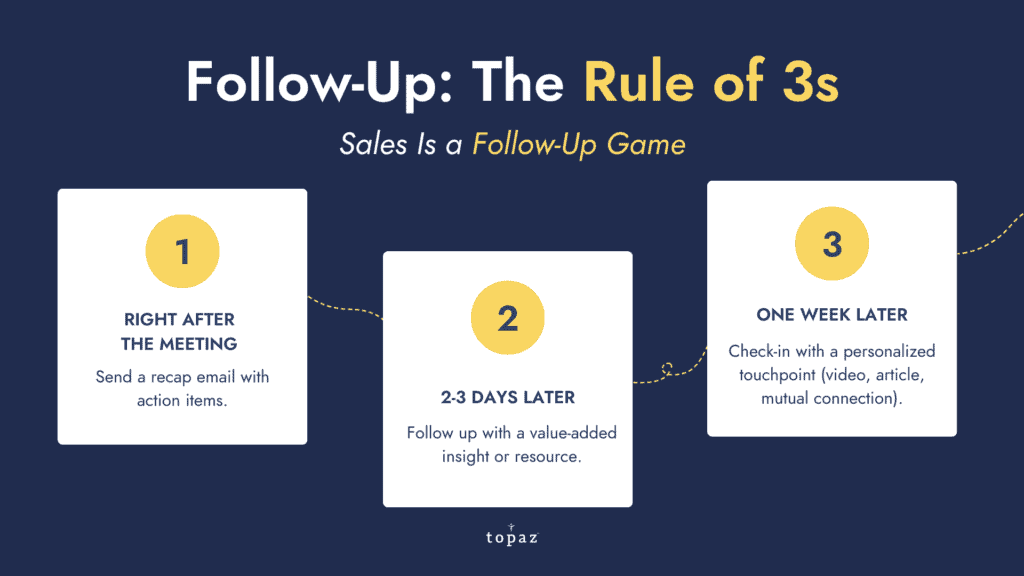
Follow Up and Sales Process Optimization
Data-Driven Conversations
Insight: Numbers build credibility.
Application: Offer a quick stat or insight that demonstrates the measurable impact of your solution, encouraging your team to weave data into their dialogues.
Spotting and Leveraging Buying Signals
Insight: Recognize subtle cues from prospects that indicate readiness to move forward.
Application: Provide an example of a buying signal and discuss how to respond effectively.
Leveraging Social Proof
Insight: Testimonials and case studies can turn hesitancy into confidence.
Application: Highlight a recent client success to remind your team of what works. Then, they can refer to it during conversations.
Refining the Art of the Follow-Up
Insight: Persistence must be balanced with value in follow-ups.
Application: Present a follow-up strategy, such as a specific cadence or personalized note idea that keeps prospects engaged without feeling pressured. Check out more ideas here.
Leveraging the 80/20 Rule
Insight: Focus on the 20% of actions that yield 80% of the results.
Application: Provide a reminder to analyze activities, ensuring that high-impact tasks get priority in every sales interaction.
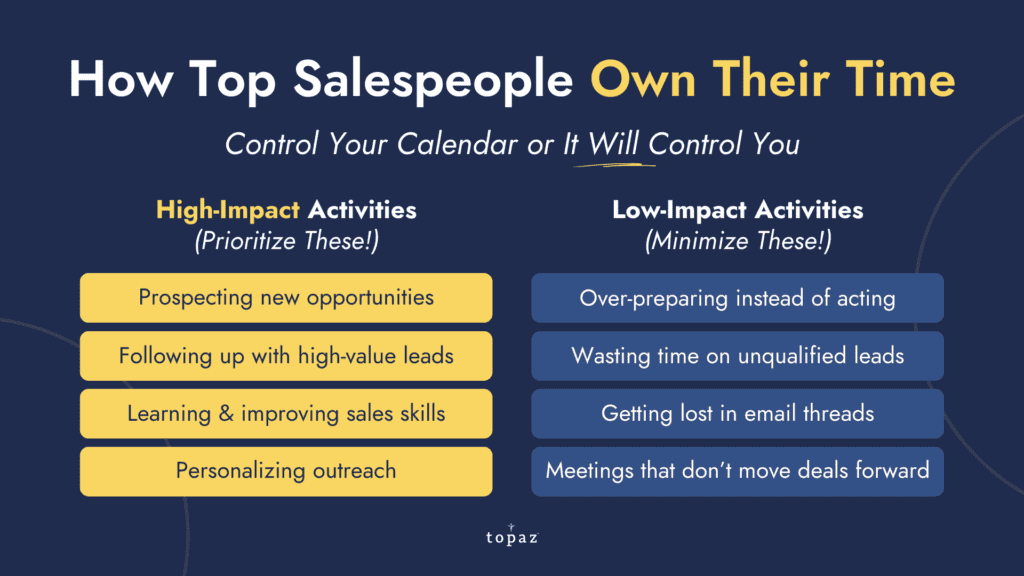
Time Management, Productivity, and Technology
Time Management Essentials
Insight: Prioritizing high-impact activities is crucial for sales success.
Application: Provide a time management tip to enhance productivity, such as scheduling prospecting windows or using a task manager.
Leveraging Social Media
Insight: Social media is a powerful channel for building credibility and engaging with prospects. It’s about broadcasting your message, cultivating meaningful relationships, and demonstrating thought leadership in your industry.
Application: Create a challenge in which each team member identifies a relevant industry conversation on LinkedIn or X and then contributes a thoughtful comment or shares an insightful post. Follow up by tracking engagement metrics (likes, comments, shares) to measure the impact of their interactions. This exercise boosts your team’s online presence and positions them as trusted experts in their field.
Time Block Mastery
Insight: Structured time management maximizes productivity.
Application: Encourage your team to experiment with a new time-blocking technique to optimize their outreach efforts.
Utilizing Technology Efficiently
Insight: The right tool, used correctly, can enhance every step of the sales process.
Application: Highlight a CRM feature or sales tool tip that streamlines tasks and fosters more innovative engagement.
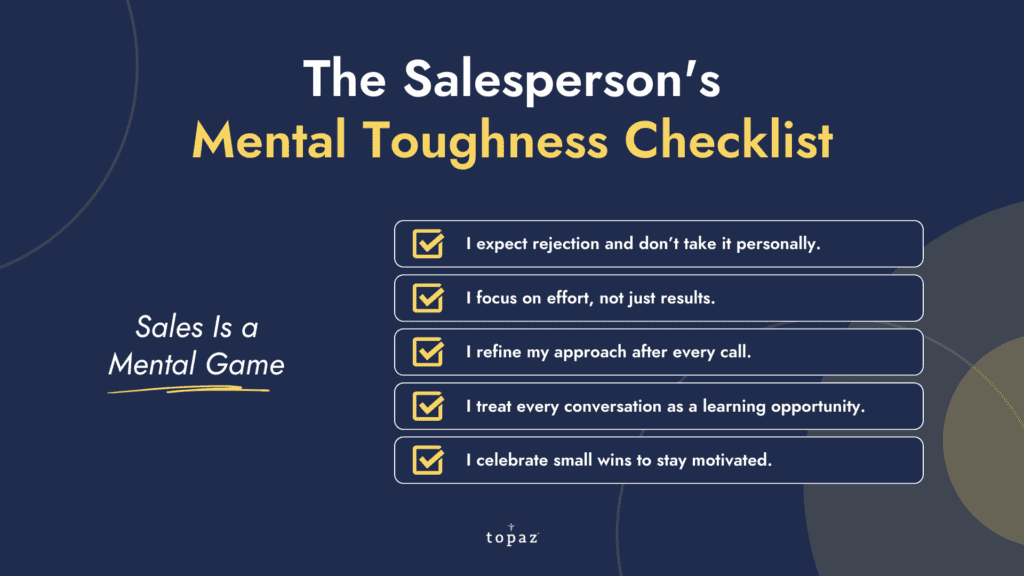
Continuous Improvement and Mindset
Adaptability in Sales
Insight: Flexibility allows you to pivot as market dynamics change.
Application: Present a scenario or challenge requiring creative thinking, encouraging the team to adapt their approach.
Handling Rejection Positively
Insight: Each “no” is an opportunity to learn and improve.
Application: Share a tip on reframing rejection—like analyzing feedback or trying a new tactic—to help the team view setbacks as growth opportunities.
Staying Ahead of Industry Trends
Insight: Knowledge of emerging trends helps you anticipate customer needs.
Application: Introduce an update on a relevant industry trend or news snippet your team can reference to demonstrate thought leadership.
Embracing Continuous Improvement
Insight: Regular reflection leads to incremental growth.
Application: Encourage a reflection question, such as “What one thing could I have done better today?” to instill a mindset of ongoing improvement.
Mindset Matters
Insight: A positive, growth-oriented mindset is foundational to success.
Application: End the sales team meeting with a motivational quote or a brief mental exercise that reinforces confidence and resilience in every interaction.
Personal Accountability Check-Ins
Insight: Personal ownership drives performance improvements.
Application: Ask your team to identify one action from the previous week that could be enhanced and track progress over time.
Quick Wins for Momentum
Insight: Celebrating small successes fuels overall morale.
Application: Highlight a quick win from the field and discuss how it can be replicated for future success.
Feedback as a Growth Lever
Insight: Constructive feedback is your fast track to continuous improvement.
Application: Encourage team members to reflect on one piece of feedback they received and consider how they can apply it in the future.
Full Yet? Why Mental Protein Fuels Your Growth
Incorporating these 40 mental protein examples into your sales team routine is more than just a method — it’s a strategic mindset shift for every sales professional.
By consistently feeding your team these essential doses of mental protein, you create a culture of continuous learning and agility. This approach equips your salespeople with the skills they need to navigate a dynamic market and empowers sales leaders to mentor and inspire with precision. Embrace this strategy to ensure your team remains agile, informed, and ready to help customers buy.
FAQ: Mental Strategies for Peak Sales Performance
1. What is ‘Mental Protein’ in Sales, and Why Does It Matter?
Mental Protein refers to the mindset shifts and mental conditioning that top sales professionals use to stay sharp, resilient, and effective. Just like physical fitness requires consistent training, mental toughness in sales is built through daily habits, continuous learning, and strategic thinking. Strengthening your mental game helps you handle rejection, navigate objections, and stay motivated through the ups and downs of sales.
2. How Can Salespeople Improve Their Prospecting Mindset?
Most sales reps hesitate with prospecting because they see it as intrusive or a numbers game. The best way to shift your mindset is to view prospecting as relationship-building, not selling. Instead of focusing on closing a deal, focus on uncovering real challenges and adding value.
3. What’s the Best Way to Handle Sales Objections Without Sounding Pushy?
Objections aren’t deal-breakers—they’re invitations to deeper conversations. Instead of overcoming objections, focus on understanding them. Use active listening and follow-up questions to uncover the root cause of the hesitation. Silence, hesitation, or vague answers are signs of unspoken objections—train yourself to pick up on these cues and respond with curiosity, not pressure.
4. Why Do So Many Salespeople Struggle with Follow-Ups?
Most sales reps fail at follow-up because they either give up too early or send generic, low-value messages. The key is strategic persistence. Follow-ups should always provide something new—whether it’s an insight, a relevant case study, or a thought-provoking question. Using the Rule of 3s (recap, value-add, personalized check-in) ensures you stay top-of-mind without annoying your prospect.
5. What Are the Key Mindset Shifts for Sales Professionals to Stay Motivated?
Sales is a long game, and motivation comes from focusing on what you can control. The best reps reframe rejection as feedback, track effort-based wins (not just revenue), and continuously refine their process.

